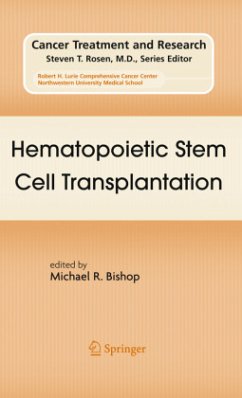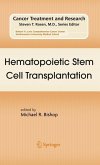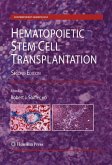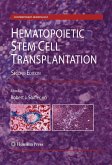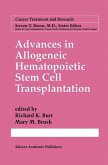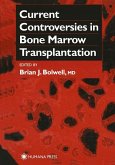The field of hematopoietic stem cell transplantation has undergone both evolutionary and dramatic changes over the past 25 years. This is evident by the fact that the term hematopoietic stem cell transplantation has effectively replaced the older term, bone marrow transplantation, due to the diverse source of hematopoietic cells that are employed for transplantation. Some of the most significant advances in hematopoietic stem cell transplantation have occurred in the past decade, as our understanding of stem cell biology, hematopoiesis, and immunology have increased. Alternative sources of stem cells, including those from unrelated donors and cord blood, the utilization of less toxic non-myeloablative and reduced-intensity conditioning regimens prior to transplant, and significantly improved supportive care measures have made hematopoietic stem cell transplantation available to greater numbers of patients.
At the same time there have been parallel advances in the treatments of malignancy, which has significantly altered the indications and the role of hematopoietic stem cell transplantation in these diseases, most notably chronic myelogenous leukemia.
This book reviews pertinent aspects of both autologous and allogeneic stem cell transplantation and our current understanding of transplantation biology including T cell and natural killer cell biology, HLA expression, and post-transplant immune reconstitution. It reviews the current clinical indications for the diseases that hematopoietic stem cell transplantation is most commonly utilized. Additional chapters cover the most recent translational research which will affect our future understanding and practice of hematopoietic stem cell transplantation.
The dogmas of the quiet past are inadequate to the stormy present. The occasion is piled high with difficulty, and we must rise with the occasion. As our case is new, so we must think anew and act anew. Abraham Lincoln, 1862 When I came across this quote, it made me recall my first participation at an international meeting on bone marrow transplantation, at a time when this was the only term that was used to describe the field. During a particular session there was a presentation on the use of peripheral blood as the sole source of stem cells for transplantation, and a member of the audience rose to state that it was medically unethical to consider such treatment, as it certainly could not contain stem cells. Now nearly twenty years later, peripheral blood is the predominant source of stem cells used for hematopoietic stem cell transplantation. In the same period of time there have been several other dogmatic opinions, which permeate all of medicine, that have come and gone in the field of hematopoietic stem cell transplantation, and will continue to do so with advancements from basic and clinical research. It is within this context that the format of this book was devised. Traditionally reviews on specific topics related to hematopoietic stem cell transplantation reflect the views of a single author or a research group.
At the same time there have been parallel advances in the treatments of malignancy, which has significantly altered the indications and the role of hematopoietic stem cell transplantation in these diseases, most notably chronic myelogenous leukemia.
This book reviews pertinent aspects of both autologous and allogeneic stem cell transplantation and our current understanding of transplantation biology including T cell and natural killer cell biology, HLA expression, and post-transplant immune reconstitution. It reviews the current clinical indications for the diseases that hematopoietic stem cell transplantation is most commonly utilized. Additional chapters cover the most recent translational research which will affect our future understanding and practice of hematopoietic stem cell transplantation.
The dogmas of the quiet past are inadequate to the stormy present. The occasion is piled high with difficulty, and we must rise with the occasion. As our case is new, so we must think anew and act anew. Abraham Lincoln, 1862 When I came across this quote, it made me recall my first participation at an international meeting on bone marrow transplantation, at a time when this was the only term that was used to describe the field. During a particular session there was a presentation on the use of peripheral blood as the sole source of stem cells for transplantation, and a member of the audience rose to state that it was medically unethical to consider such treatment, as it certainly could not contain stem cells. Now nearly twenty years later, peripheral blood is the predominant source of stem cells used for hematopoietic stem cell transplantation. In the same period of time there have been several other dogmatic opinions, which permeate all of medicine, that have come and gone in the field of hematopoietic stem cell transplantation, and will continue to do so with advancements from basic and clinical research. It is within this context that the format of this book was devised. Traditionally reviews on specific topics related to hematopoietic stem cell transplantation reflect the views of a single author or a research group.

